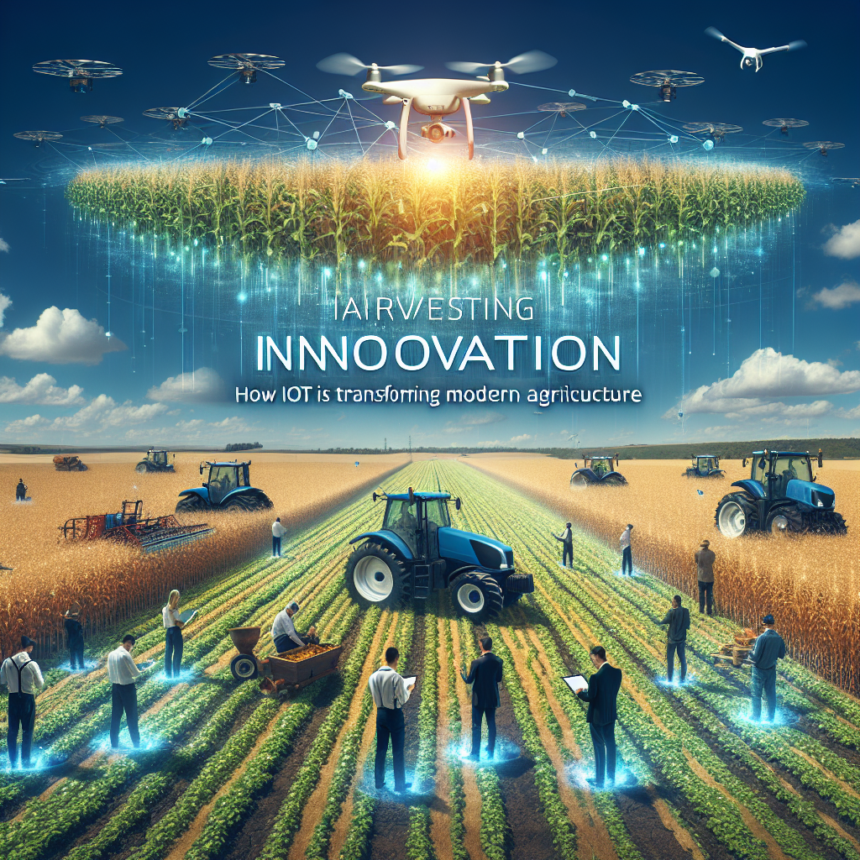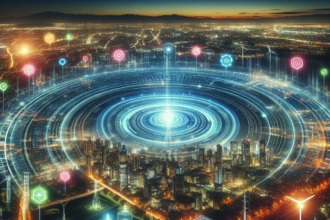Harvesting Innovation: How IoT is Transforming Modern Agriculture
The advent of the Internet of Things (IoT) has ushered in a new era of innovation in agriculture, reshaping the way farmers grow, monitor, and deliver their produce. As the global population continues to rise, the demand for food is escalating, necessitating smarter, more efficient farming practices. IoT technology – which encompasses interconnected devices that collect and share data – is providing farmers with the tools to enhance productivity, reduce costs, and minimize environmental impact.
The Role of IoT in Agriculture
IoT technology in agriculture employs various connected devices, sensors, and analytical tools to gather real-time data from the farm. This data can include soil moisture levels, temperature, humidity, crop health, and even livestock conditions. By utilizing this information, farmers can make informed decisions that optimize farming processes.
-
Precision Farming: One of the most compelling advantages of IoT in agriculture is the emergence of precision farming. Farmers can utilize GPS technology and IoT-enabled sensors to apply precisely the right amount of water, fertilizers, and pesticides at the right time and location. This targeted approach not only conserves resources but also minimizes the ecological footprint of agricultural practices.
-
Smart Irrigation: Water scarcity is a pressing issue in many regions. IoT-based solutions enable the development of smart irrigation systems that automatically adjust water usage based on real-time soil moisture data and weather conditions. By ensuring that crops receive just the right amount of water, these systems help to conserve precious water resources and improve crop yields.
-
Crop Monitoring: Drones and satellite imagery, combined with IoT sensors, allow for continuous monitoring of crop health and growth. Farmers can detect pest infestations, nutrient deficiencies, or diseases early on, enabling timely interventions. This not only improves overall health and yield but also reduces the need for chemical treatments, promoting more sustainable practices.
-
Livestock Management: IoT technology extends beyond crop management to livestock farming. Wearable devices can monitor animal health, track movements, and even measure vital signs. This data can alert farmers to illnesses or stress in real-time, allowing for prompt action that can save both resources and animal lives.
- Supply Chain Optimization: IoT is transforming the agricultural supply chain as well. Sensors and RFID tags can track products from farm to table, providing visibility into transportation conditions and helping to ensure that food is delivered in optimal condition. This transparency fosters trust with consumers while also reducing food waste.
Benefits of IoT in Agriculture
The integration of IoT in farming practices offers numerous benefits:
-
Increased Efficiency: By automating various processes and providing real-time insights, IoT allows farmers to work more efficiently, reducing labor costs and optimizing crop management.
-
Higher Yields: With improved monitoring and precision techniques, farmers can achieve better yields and higher quality produce. This directly translates into increased profitability.
-
Sustainable Practices: IoT helps in minimizing the use of chemicals and water, leading to more sustainable farming practices that protect the environment and preserve natural resources for future generations.
- Enhanced Decision-Making: The real-time data provided by IoT devices empowers farmers to make informed decisions, from planting and harvesting to marketing their products.
Challenges and Considerations
Though the benefits of IoT in agriculture are significant, there are challenges to consider. Data security and privacy remain critical issues, as farmers must trust that their information will be protected. Additionally, the initial costs of implementing IoT technology can be daunting for some.
Moreover, farmers require training to effectively use these advanced technologies, which necessitates a commitment to ongoing education and support.
Conclusion
As we stand on the brink of the Fourth Industrial Revolution, the integration of IoT in agriculture signifies a pivotal step towards smarter, more sustainable farming. By harnessing the power of connected devices and real-time data, farmers are not only feeding a growing global population but doing so in a way that preserves resources and benefits the environment.
FAQs
Q1: What is the Internet of Things (IoT)?
A1: The Internet of Things refers to a system of interrelated devices that collect and exchange data through the internet, enabling automation and improved efficiency.
Q2: How does IoT improve farming practices?
A2: IoT enhances farming by providing real-time data for precision farming, smart irrigation, crop monitoring, and livestock management, leading to increased efficiency and higher yields.
Q3: What are some challenges associated with IoT in agriculture?
A3: Challenges include data security concerns, the cost of implementation, and the need for ongoing training and education for farmers.
Q4: Are IoT solutions affordable for small-scale farmers?
A4: While some IoT technologies may have high upfront costs, many solutions are becoming increasingly affordable and accessible due to advances in technology and widespread availability.
Q5: How does IoT contribute to sustainability in agriculture?
A5: IoT helps reduce the use of water and chemicals through precise applications, leading to sustainable agricultural practices and less environmental impact.









